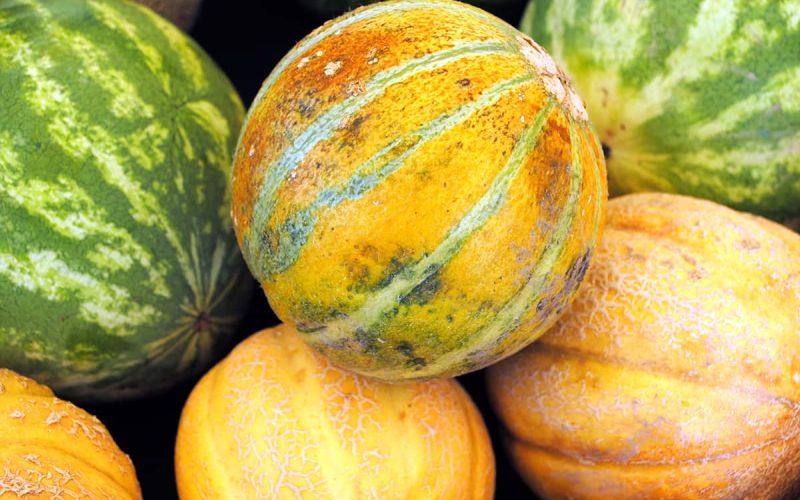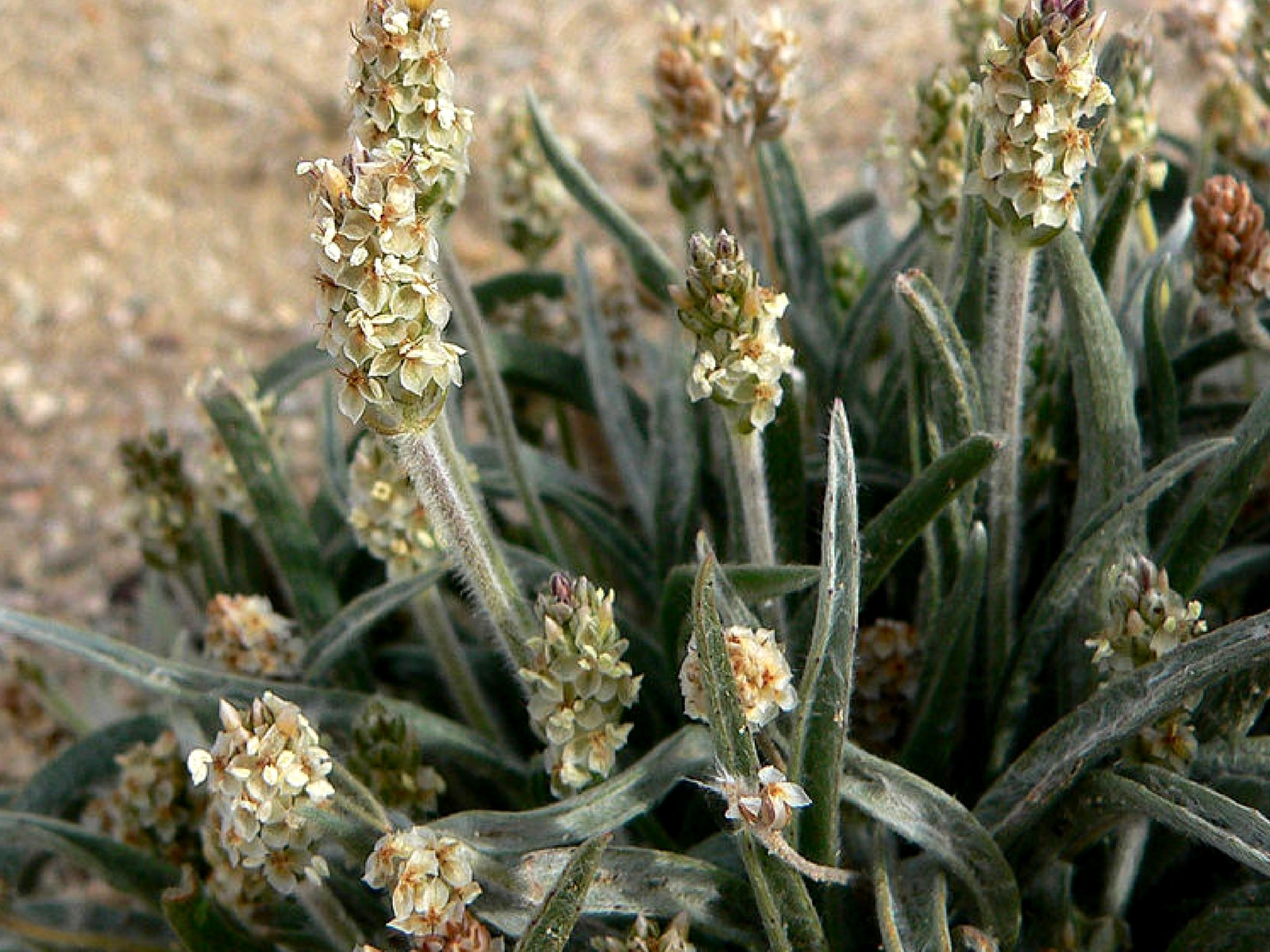Melons are a type of fruit that belongs to the family of Cucurbitaceae and grows on vines that spread across the ground with support or can be held upright.
In their own right, these plants are not usually attractive but are commonly cultivated for the delicious fruits they grow.
They have been grown in areas such as Egypt and Africa for over 4,000 years as an important source of food.
There are many types of melons, but most are very fast-growing and simple to care for, with different tastes and appearances.
Melon seeds sown in early spring will yield fruits that are ripe by the end of summer or early fall, with a rapid turnaround that is enticing to kids or anyone who wants to see fast results.
Melon plants require full sun and warm temperatures for many months, so they are well suited to warm climates, but they can also be grown in milder regions in greenhouses.
All types of melons must be grown in preferably rich and fertile, well-drained soil. They enjoy constant moisture, although some offer tolerance for drought.
1. Cantaloupe – Cucumis melo var. Cantalupensis
- Hardiness Zone: 9-11
- Mature Size: 1 foot tall, 4 feet long
- Light: Full sun
- Water: Medium moisture needed
- Soil: Well-draining, loamy
There are two types of melons generally referred to as ‘cantaloupe.’ These are the North America Cantaloupe and European Cantaloupe.
The European Cantaloupe was grown in Cantalupo, Italy, in the 1700s and is named after its place of birth. Usually, this cantaloupe has gray-green skin with white lines. It is also known as the true’ cantaloupe,’ as the original cantaloupe.
The North American Cantaloupe is now cultivated in Mexico, Canada, and the US in warm regions. It has netted skin and is North America’s most commonly grown cantaloupe.
The sweet-tasting orange flesh of both forms of cantaloupe is usually eaten as a balanced meal, in a fruit salad, or as a dessert.
In the summer, cantaloupe vines produce yellow flowers and have foliage that can range from dark green to cream-variegated.
2. Watermelon – Citrullus lanatus
- Hardiness Zone: 8-11
- Mature Size: 1.5 feet tall, 15 feet long
- Light: Full sun
- Water: Medium moisture needed
- Soil: Fertile, well-draining
Watermelons are native to Africa, where for over 4,000 years, the fruits have been grown for consumption. There are now over 1,200 cultivars of watermelon, which grow fruits ranging in size from 6 pounds to 50 pounds. There are common features of all these types of watermelons, including firm outer rinds and soft inner flesh that is dotted with seeds throughout.
Watermelons, somewhere in the range of 90 percent, have exceptionally high water content, and this is where their name comes from. In the summer, the high water content allows for a refreshing snack, and because of its large size, even after being removed from the refrigerator, it stays cool.
Watermelons are a very popular fruit and are commonly grown for consumers across the globe. China accounts for 70% of the production of watermelon, while Turkey, Brazil, and Iran are also main producers. Over 40 states cultivate commercial watermelons in the United States, as they can be grown as an annual plant in a wide variety of climates, although they thrive in hotter climates.
As they are intolerant of soggy environments, watermelons should be grown in well-draining soil. They grow on hairy vines trailing along the ground in July and August, producing hairy foliage and pale green flowers.
3. Canary Melon – Cucumis melo var. Inodorus ‘Canary’
- Hardiness Zone: 9-12
- Mature Size: Up to 2 feet tall, and 10 feet long
- Light: Full sun
- Water: Medium moisture needed
- Soil: Well-draining
Canary melons are from the inodorous type of muskmelons. This category includes different types of melons, such as honeydews, Crenshaw, and Casabas. As the name suggests, Canary melons have bright yellow skin and are sometimes incorrectly referred to as honeydew melons, but they are much tangier than true honeydews.
The flesh of this melon is light green in colour and, when mature, has a soft texture. Canary melons are oval-shaped and bigger than cantaloupes when ripe. The plant’s vine can crawl or track, and in the spring, it produces pretty yellow flowers.
It takes about 80 days for the Canary melon plant to bear fruit, and it is widely cultivated in Asia and South America. It is popular both as a breakfast food and in fruit salads. Canary melons are widely found throughout the year in grocery stores across the globe since they have a long shelf life and therefore transport well.
4. Armenian Cucumber – Cucumis melo var. Flexuosus
- Hardiness Zone: 7-9
- Mature Size: Up to 9 feet long and 3 feet wide
- Light: Full sun
- Water: Medium moisture
- Soil: Rich, well-draining
Botanically speaking, this fruit is a melon, although it tastes and looks like a cucumber. It was first cultivated in the 1400s and grown in countries, including Egypt and Armenia, across western Asia.
On an annual vine, which is frost tender, the fruits grow. The vine grows yellow flowers in warm climates that will bloom for most of the year or in colder climates during the season. The vine often creates irregularly lobed leaves, covering its stems.
Long and slender are the melon of this species, with light green skin and white flesh. In their entirety, they can be consumed and do not need peeling. When young, they taste best at a size of about 1 foot long.
However, they can continue to grow up to 3 feet in length, but with maturity, the flesh of the fruit dries out and becomes hard.
5. Snap Melon – Cucumis melo momordica
- Hardiness Zone: 9-11
- Mature Size: Up to 5 feet long
- Light: Full sun
- Water: Medium moisture
- Soil: Well-draining
This fruit, native to Asia, is grown on an annual climbing vine. It is frost tender and can therefore be grown only in a frost-free setting outdoors or normally does well when grown in a pot and held through the winter in a greenhouse.
The plant is self-fertile and is insect-pollinated, so you will only need one vine if you want your snap melon vine to bear fruit. The fruit itself is oval with smooth skin and flesh that tastes sour. As a herbal remedy, the fruit is also used, offering relief for minor cuts and burns.
6. Galia Melon – Cucumis melo var. Reticulatus ‘Galia’
- Hardiness Zone: 5-11
- Mature Size: Up to 1 foot tall, 8 feet long
- Light: Full sun
- Water: Medium moisture needed
- Soil: Rich and well-draining
The Galia Melon was developed as a cross between a cantaloupe and a honeydew melon in Israel in the 1970s. Usually round, with a strongly netted rind and a sweet and spicy flavour, the resulting plant produces fruit. It is now grown worldwide, including South America, Europe, and the Southern US, in warm climates.
Once the rind spreads to yellow from green, the fruit is called ripe. It has lime green, pale, juicy flesh. On vines that sprawl along the field, Galia melons are among the types of melons that are easy to grow. They can be grown anywhere that has reliably warm weather for many months in a row.
To grow these melons, after the last frost, sow the seeds directly. In a well-draining soil that is constantly kept moist but not wet, they need to be cultivated. Reduce watering to a low level about a week before you are due to harvest the plant, as this will increase the sweetness of the fruit and avoid splitting.
In order to grow upwards or left to trail on the ground, the vine may be supported, but the melons must be held off the floor to prevent them from rotting. By sitting each melon on a can of tin or covering the ground with a layer of straw, you can do this.
7. Winter Melon – Benincasa hispida
- Hardiness Zone: 9-11
- Mature Size: Up to 20 feet long
- Light: Full sun
- Water: Medium moisture, somewhat drought tolerant
- Soil: Well-draining
This particular melon gets its name from the fact that it has an unusually long shelf life and is still good for eating in the winter, although it is grown in the summer. Its longevity, which helps to keep the inner flesh fresh, is due to its waxy skin. When the fruit is ripe, the waxy skin only grows, with young winter melons having a hairy and fuzzy rind.
These types of melons look similar to watermelons and have a dark green exterior. They have pale and seeded flesh. Fruits from the winter melon vine are renowned for being very tall, sometimes weighing in excess of 40 pounds. Yellow flowers and large, wide leaves are also produced.
The fruit appears to taste very bland and is often used in stir-frying and cooking as a vegetable. It is also candied, as well as pickled or preserved in some countries, giving rise to its other common name,’ Chinese Pickling Melon.’
Sometimes steamed and eaten as a vegetable or added to soups and stews, the young and tender leaves of this plant are also edible. This melon comes from Asia, where it is now widely grown.
8. Santa Claus Melon – Cucumis melo var. inodorous ‘Sancho’
- Hardiness Zone: 9-11
- Mature Size: Up to 10 feet long
- Light: Full sun
- Water: Medium moisture
- Soil: Well-draining
This cultivar, another melon from the Inodorus melon variety, is native to Spain and is also widely known as the Christmas Melon. With stripes, the fruit has a dark green outer rind, whereas the flesh is pale green-white.
The taste is similar, being mild and soft, to that of the honeydew melon. In the US, Spain, and South America, this melon is widely cultivated. It is usually harvested at the end of summer in California, but the fruit is widely available throughout the year as it has a long shelf life of about 6 months, so it became known as the Christmas Melon because it was said to last until Christmas.
These types of melons are shipped from South America to the US and Europe as well. Melons mature after planting for a little over 100 days and reach up to 12 inches in length.
9. Honeydew Melon – Cucumis melo var. inodorus – H.Jacq.
- Hardiness Zone: 9-11
- Mature Size: Up to 5 feet long
- Light: Full sun
- Water: Medium moisture
- Soil: Well-draining, moisture retentive
On an annual plant, which is frost tender, this melon grows. It is commonly cultivated for its mild-flavoured, soothing fruit, both commercially and in home gardens. Honeydew melons, which can be yellow or green, have a smooth and waxy rind.
The flesh can be eaten raw or dried and is pale green and watery. In late summer or early fall, these melons typically ripen after flowering in the early to mid-summer months. Honeydews are very low in calories and are high in vitamin C and vitamin B. Also, the seeds are very tasty and can be consumed raw or roasted.
As long as you have several months of warm weather each year in succession, the plant itself is very easy to grow. It is a plant that is self-fertile, needs a complete location of the sunlight and consistent moist soil. When combined with sunflowers and corn, it grows especially well.
10. Gac Melon – Momordica cochinchinensis
- Hardiness Zone: 9-11
- Mature Size: Up to 66 feet long
- Light: Full sun
- Water: Medium moisture
- Soil: Well-draining
A reference to the Cochinchina region of Vietnam where this melon was found is the botanical name of Momordica cochinchinensis. It is also native to several other regions across the globe, including parts of Australia, China, and other Southeast Asian countries.
Gac melons are oval-shaped, about 5 inches long, with a red or dark orange spiked rind. Two pieces, both of which are edible, form the inner fruit. The yellow portion is the fruit, while the seed membrane is the red portion. It is most widely used in cooking because it does not have a very interesting taste, so it is not generally eaten alone. It lacks sweetness and is similar to avocado in taste. It can be used for curries, stews, and soups in recipes.
The Gac Melon plant is a perennial vine. It is dioecious, meaning that on different vines, male and female flowers are produced, so the flowers must be cross-pollinated in order for fruiting to occur. This implies that in order for insects to successfully cross-pollinate the plants, both female and male vines need to be planted in near proximity to each other.
The Gac melon vines grow very rapidly and can attain wide lengths in excess of 60 feet. Just two months after planting, the vine will produce flowers that grow into the fruit. Every season, one vine will usually produce 40 – 60 Gac melons.
11. Casaba Melon – Cucumis melo var. Inodorus ‘Golden Casaba’
- Hardiness Zone: 9-11
- Mature Size: Up to 4 feet long
- Light: Full sun
- Water: Medium moisture
- Soil: Well-draining
Another melon originating from the inodorous variety, commonly known as muskmelons, is the Casaba Melon. Although the honeydew melon and the cantaloupe melon are very closely related, this type of melon doesn’t have an obvious aroma or a sweet taste. In terms of taste, it is more comparable to a cucumber and an Asian pear.
Casaba melons have a unique look and can be recognized from their exterior instantly. They have a round shape that, with a thick, deeply ridged rind, comes to a defined point at one end.
On a bright yellow skin that is sometimes flecked with green, the ridges run in stripes from end to end. The thick rind helps protect and gives a long shelf life to the soft inner flesh.
It is grouped together with other types of melons, which are known as ‘winter melons’ that have a long shelf life. While they are grown in the summer, they are called ‘winter melons’ since they can be kept for many months, and some of the only melons suitable for eating during the winter were available in days gone by.
The flesh of the Casaba melon is a pale creamy green and is most widely used in cold recipes and producing beverages. When they are raw, added to cold soups, smoothies, and sorbets, casaba melons are best.
12. Crenshaw Melon – Cucumis melo var. Inodorus ‘Crenshaw’
- Hardiness Zone: 8-11
- Mature Size: Up to 18 feet long
- Water: Medium moisture
- Light: Full sun
- Soil: Well-draining, fertile
This melon is a hybrid variety that was created by crossing a melon from Persia with melon from Casaba.
It grows well in a number of regions around the world, including North and South America, the Middle East, and Mediterranean countries.
It requires full sun and rich, well-draining soil that is continuously kept moist but not too wet to grow.
It is medium to broad in size, generally when ripe, weighing about 10 pounds. With a thick rind that is green-yellow with ridges running along its circumference, it is oval-shaped.
Tender, soft, and juicy are the inner meat. It has a pink-peach salmon hue, with a heavy seed sack running through its middle.
In spite of this melon’s thick rind, it has a rather short shelf life. When extracted from the vine, it is best to consume within a week.
Crenshaw is most commonly eaten as a sweet melon in fruit salads or as a dessert.
For an appetizer, it even fits well on seared melon skewers or wrapped in cured hams. Berry smoothies may also be added to it or blended and frozen into a refreshing sorbet.
13. Honey Globe Melon – Cucumis melo var. Inodorus ‘Honey Globe’
- Hardiness Zone: 9-11
- Mature Size: Up to 6 feet long
- Light: Full sun
- Water: Medium moisture
- Soil: Well-draining
Originally, this melon originated in Southeast Asia, where it is still widely grown. For a melon, it has an unusually short harvesting time and is thus very hard to come by and also has a big price tag attached.
This melon is round in shape and is very sweet, as suggested by the name. It has around a sugar content of 20 percent, making it one of the sweetest types of melons available.
It has a rather thick rind which, with green markings, can be fully white or white.
The flesh is very juicy, white, and has a smooth texture.
When mature, these melons can weigh up to 10 pounds, and these melons need to be cut from their vine for harvesting, unlike most melons that fall from the vine when ripe.
This is because the fruit is bound to its vine by a dense and also robust stem.
The plant from which the Honey Globe melon is grown is ideal for cultivation and produces golden-orange flowers in warm climates.









